So for those that know me, I have a bit of an origami hobby. I like to use certain papers for certain models, such as paper with more of soft cloth-like texture for making lotus flowers, thicker construction paper for a model that needs to retain its shape, and other papers that have flexibility but hold their shape. Regardless of what type of paper I am using, those papers need to be made from something. Most of normal printer paper and writing paper are made from wood pulp and have gone through some sort of bleaching process (I don’t know what the actual process is). I use an assortment of different papers, but I don’t know what kinds of plants are used to make the papers that I use. On the 15th, while in the mountain town of Nagawa, we stopped by a traditional washi-making workshop (washi refers to paper made by hand in the traditional method). Being a part-time origamist (I don’t think there is an actual title for one who folds), I was very excited to go and see one of the types of paper I use get made in front of me. The work-shop we went to makes their washi out of Mulberry bark fibers, but washi can be made out of a variety of different plant fibers. The bark first must be stripped from the plant, then through a process that goes something like getting boiled, then washed, then boiled again until you are left just with fibers that are brown and can be easily dispersed in water (I don’t remember the actual process, so don’t quote me on this), which can be used to make paper in that color, or the pulp can be bleached (chemically I think) to make it white, which is what most people are accustomed to seeing their paper as.
We watched as the master washi-maker showed us how he maneuvers the porous screen to make a uniform layer of pulp as water is swished around in a particular motion. The frame that holds the screen is very heavy and is suspended by bamboo poles attached to the ceiling. A few students had a chance to try using the frame to make a sheet of paper, and all found it much harder to do then imagined. The pulp very easily bunched up on the screen if you did not consistently have it angled in a certain way. After watching those attempts and comparing to how “easily” the washi-master was able to make a sheet, I really appreciated how much skill is required to make something that seems so simple and seems to be a basic necessity of life.
While in Japan, I plan to find different kind of this “necessity of life” that I can’t find back home, and to make them into special origami models. Many of the things I make are nature-related. Flowers and animals are much of my output. I find this interesting, that I want to make organisms that I see in nature, but in paper form. For example, I make a version of a rose that I learned from a youtube tutorial. After finishing, there is a process of “shaping” which aren’t really folds, but coaxing the paper into a more aesthetically pleasing form, mostly rounding out edges and trying to get a less ridged and smoother, more “natural” look. It’s odd, thinking about it, to try to get a paper rose to look as close as it can to the real thing since it will never be a real rose, so why try to strive for that and not just instead make a paper rose that is to look like a paper rose, not a real one? This probably comes down to the idea of humans trying to control and mold nature into the image that we want to see, which is an idea we have come across in our class. It seems ironic, to me, to try to re-create “living” nature out of dead natural material, like if I make an origami tree out of paper that was made from tree wood-pulp—the tree was cut down and part of it has been made into what it originally was, but made in the way I want the tree to look like. This is a bit of an inner quarrel I have with myself, but I still continue to buy more paper and fold, which means I am contributing to plants being cut down for human use, and probably not in a very sustainable way. There are some papers for origami that I’ve used that are made from recycled material or from material that is normally thrown away, like banana plant fibers, and though that may seem more environmentally-friendly, I wonder how harmful the processes to make paper from these material is. This is something that I have only thought about now while writing this post, what the effects of the processes of making the different papers I have are. I usually only think of the plant that is killed and what I throw away, but not about production effects. Production effects is something that I think many people do not think about with product they buy. For example, I assume most people that are concerned about throwing away plastic wrap are thinking of how the material will take thousands of years to break down and may end up killing animals that ingest it, but they are most likely not thinking of what chemical wastes are produced when that same plastic wrap was being made. Thinking about this idea, I am now more inclined to buy handmade papers, such as the washi I saw being made, since a process by hand seems less environmentally harmful in comparison to paper produced by machines.

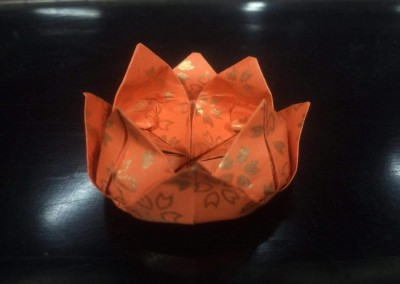

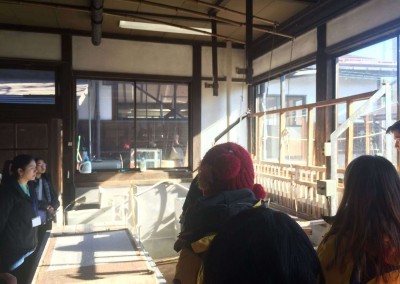
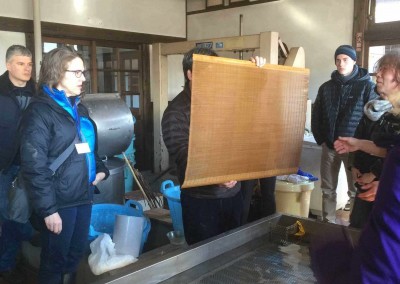
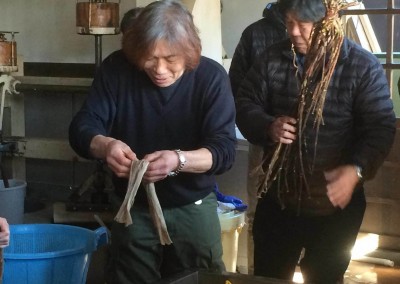
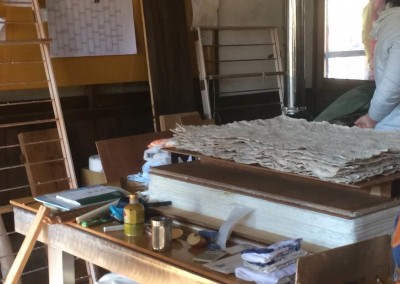
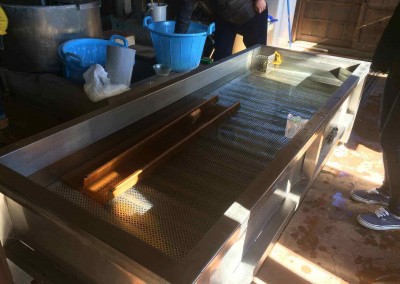
Recent Comments